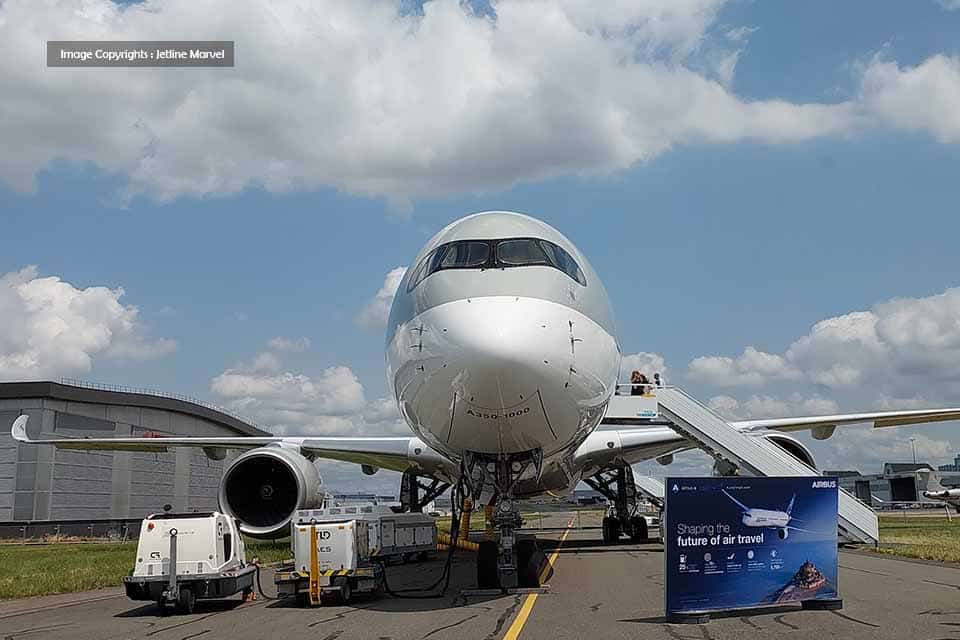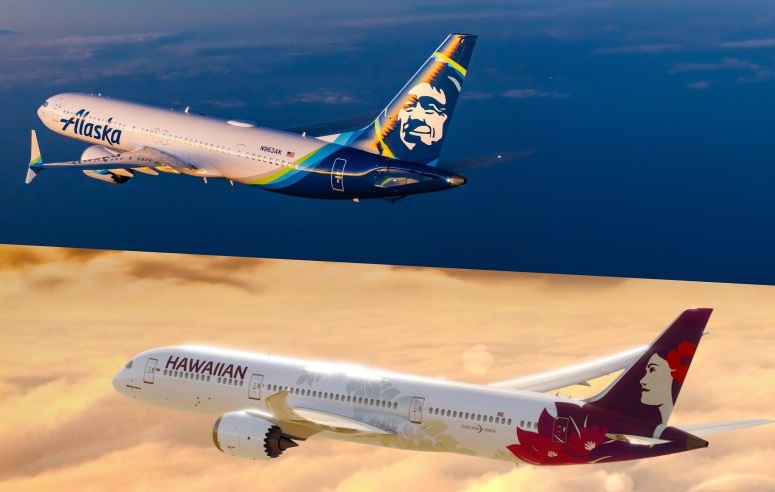News
Qatar Airways to Create Its Own Indian Airline With 100 Planes

In a bid to gain a bigger share in one of the world’s biggest markets, Qatar Airways announced on Wednesday its plan to launch a new domestic airline in India. This would be the first airline venture in the country that would be fully-owned by overseas entities.
In a media interaction at the ITB Berlin travel fair, Chief Executive Officer Akbar Al Baker said that the Gulf carrier would make an application to the Indian authorities ‘soon’.
“We are joining hands with the investment arm of State of Qatar to start a domestic airline in India with a 100 percent investment,” Al Baker said.
“We are doing this because Indian government has opened up the foreign direct investment in (setting up) an airline in India,” he added.
In the past, Qatar Airways has repeatedly expressed its interest to invest in IndiGo, the country’s largest domestic airline. However, nothing could be finalised in that deal.
Last June, liberalizing the FDI regulations, the Government allowed foreign investors — barring overseas airlines — to own up to 100 per cent stake in local carriers. At present, foreign airlines are allowed to invest only up to 49 per cent in domestic carriers.
Qatar Airways is British Airways-owner IAG’s biggest shareholder. It also has its stakes in South America’s biggest carrier, Latam Airlines Group SA and Italy’s second-largest airline, Meridiana Fly SpA.
The Gulf carrier has been trying to expand its presence in India but its growth has been limited because of limitation of traffic right.
On the latest development, Aviation secretary, Rajiv Nayan Choubey said, “I did not expect this (so soon), We will await for the application and will process it as per government policy”.
Profitability:
Qatar Air’s announcement comes amid the sector going downhill due to rise in aviation turbine fuel (ATF) prices, intensifying competition, and falling yields.
In fact, most players in recent months have been able to post profits only due to income from non-core areas, that is, activities other than selling tickets.
Market leader IndiGo, with 39.3 per cent passenger traffic share in 2016, reported a 26 per cent drop in net profit in the third quarter of 2016/17 compared with the corresponding period of the previous year. Revenues grew 16 per cent during the period.
Jet Airways, the second-largest player in terms of market share, reported a 69.5 per cent decline in (standalone) net profit; revenues grew just 0.6 per cent. Gurgaon-based SpiceJet reported a 24.5 per cent drop in net profit and 12.5 per cent increase in revenues.
The dip in profits has come in spite of the airlines earning higher revenues, albeit marginally, on account of the overall increase in passenger traffic, which grew 23.18 per cent in 2016. Still, bottom lines felt the pressure, as average fares fell for most carriers.
Indigo’s yield went down to Rs3.48 in the December 2016 quarter from Rs4.14 in the December 2015 quarter. Yield is average fare per passenger per kilometer. This means if IndiGo was charging Rs4,753 for a Delhi-to-Mumbai ticket in the December 2015 quarter, it charged Rs3,995 for the same flight in the December 2016 quarter.
Ratings agency ICRA, in a December 2016 report, said that “addition of capacity by new airlines and rapid expansion of capacity by existing ones have resulted in an intensely competitive market and prompted airlines to resort to a variety of fare promotions to improve PLFs [passenger load factors].” It is these fare wars that cost airlines dearly.
Courtesy : Business today

Airlines
Alaska Airlines Acquisition of Hawaiian Airlines Reshapes the Air Travel Landscape

Alaska Air Group, Inc. (NYSE: ALK) and Hawaiian Holdings, Inc. (NASDAQ: HA) jointly announced today the execution of a definitive agreement, signifying Alaska Airlines’ acquisition of Hawaiian Airlines at a cash price of $18.00 per share. The total transaction value stands at approximately $1.9 billion, encompassing Hawaiian Airlines’ net debt of $0.9 billion.
The combination of complementary domestic, international, and cargo networks
This strategic union is poised to open up an array of additional destinations, providing consumers with increased choices in crucial air service options across the Pacific region, Continental United States, and globally.
The transaction is anticipated to establish a robust platform for growth and competition in the U.S., offering enduring employment opportunities, ongoing community investments, and a commitment to environmental stewardship.
Key Points:
- Acquisition Overview:
- Fleet Expansion and Network Reach:
- Creates the fifth-largest U.S. airline with a fleet of 365 narrow and wide-body airplanes.
- Enables access to 138 destinations through combined networks and over 1,200 destinations via the oneworld Alliance.
- Hub Development and Connectivity:
- Honolulu to become a key hub for the combined airline, offering expanded services to the Continental U.S., Asia, and the Pacific.
- Tripling the number of destinations from Hawai‘i to North America, while maintaining robust Neighbor Island service.
- Commitment to Hawai‘i:
- Strong commitment to Hawai‘i, ensuring robust Neighbor Island air service.
- Aiming for a more competitive platform supporting growth, job opportunities, community investment, and environmental stewardship.
- Employee and Union Commitment:
- Commitment to maintaining and growing the union-represented workforce in Hawai‘i.
- Immediate value creation with at least $235 million of expected run-rate synergies.
- Investor Call and Timeline:
- Investor conference call scheduled for today at 5:00 p.m. ET / 2:00 p.m. PT / 12:00 p.m. HT.
- Anticipated closing of the transaction within 12-18 months.
- Strategic and Financial Rationale:
- Complementary networks to enhance competition and provide greater choice for consumers.
- Preservation of both Alaska and Hawaiian Airlines’ brands on a single operating platform.
- Expected to deliver high single-digit earnings accretion for Alaska Airlines within the first two years.
- Community and Sustainability Commitment:
- Focus on growth in union-represented jobs and strong operational presence in Hawai‘i.
- Commitment to environmental stewardship, aligning with Alaska Airlines’ five-part path to net zero by 2040.
- Synergies and Accretion:
- Expected run-rate synergies of at least $235 million.
- Transaction multiple of 0.7 times revenue, approximately one third the average of recent airline transactions.
- Conditions to Close:
- Approval by regulatory authorities and Hawaiian Holdings, Inc. shareholders.
- Expected to close in 12-18 months, with the combined organization based in Seattle under the leadership of Alaska Airlines CEO Ben Minicucci.
-

 Travel1 week ago
Travel1 week agoAir India to Expand US Operations with Three New Routes After a Decade
-

 Travel2 weeks ago
Travel2 weeks agoWhy We Should Avoid These Stamps in a Passport
-

 Airlines1 month ago
Airlines1 month agoInvestigations Reveal Fake Chinese Titanium in Boeing and Airbus Jets
-

 Tech4 weeks ago
Tech4 weeks agoChina’s CATL Plans 1,800-Mile Electric Plane Launch by 2027
-

 Airport3 days ago
Airport3 days agoTop 10 Largest Airports in the World by Size
-

 Aerospace4 weeks ago
Aerospace4 weeks agoChina’s Fighter Jets Turn Wings into Autonomous Drones
-

 Airlines4 days ago
Airlines4 days agoAir India Rolls Out A350s for Delhi-New York JFK and Newark Routes
-

 Defence3 weeks ago
Defence3 weeks agoBoeing Enhances Chinook with New Engines and Block II Upgrades at $96 Million







